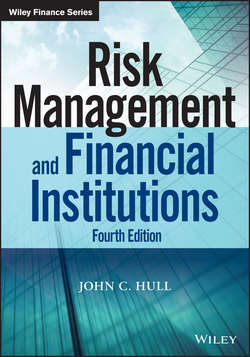Читать книгу Risk Management and Financial Institutions - Hull John C. - Страница 29
PART One
Financial Institutions and Their Trading
CHAPTER 2
Banks
PRACTICE QUESTIONS AND PROBLEMS (ANSWERS AT END OF BOOK)
Оглавление1. How did concentration in the U.S. banking system change between 1984 and 2014?
2. What government policies led to the large number of small community banks in the United States?
3. What risks does a bank take if it funds long-term loans with short-term deposits?
4. Suppose that an out-of-control trader working for DLC bank (see Tables 2.2 and 2.3) loses $7 million trading foreign exchange. What do you think would happen?
5. What is meant by net interest income?
6. Which items on the income statement of DLC bank in Section 2.2 are most likely to be affected by (a) credit risk, (b) market risk, and (c) operational risk?
7. Explain the terms “private placement” and “public offering.” What is the difference between “best efforts” and “firm commitment” for a public offering?
8. The bidders in a Dutch auction are as follows:
The number of shares being auctioned is 150,000. What is the price paid by investors? How many shares does each investor receive?
9. What is the attraction of a Dutch auction over the normal procedure for an IPO? In what ways was Google's IPO different from a standard Dutch auction?
10. Management sometimes argues that poison pills are in the best interests of shareholders because they enable management to extract a higher price from would-be acquirers. Discuss this argument.
11. Give three examples of the conflicts of interest in a large bank. How are conflicts of interest handled?
12. A loan for $10 million that pays 8 % interest is classified as nonperforming. What is the impact of this on the income statement?
13. Explain how the loan loss provision account works.
14. What is the originate-to-distribute model?
